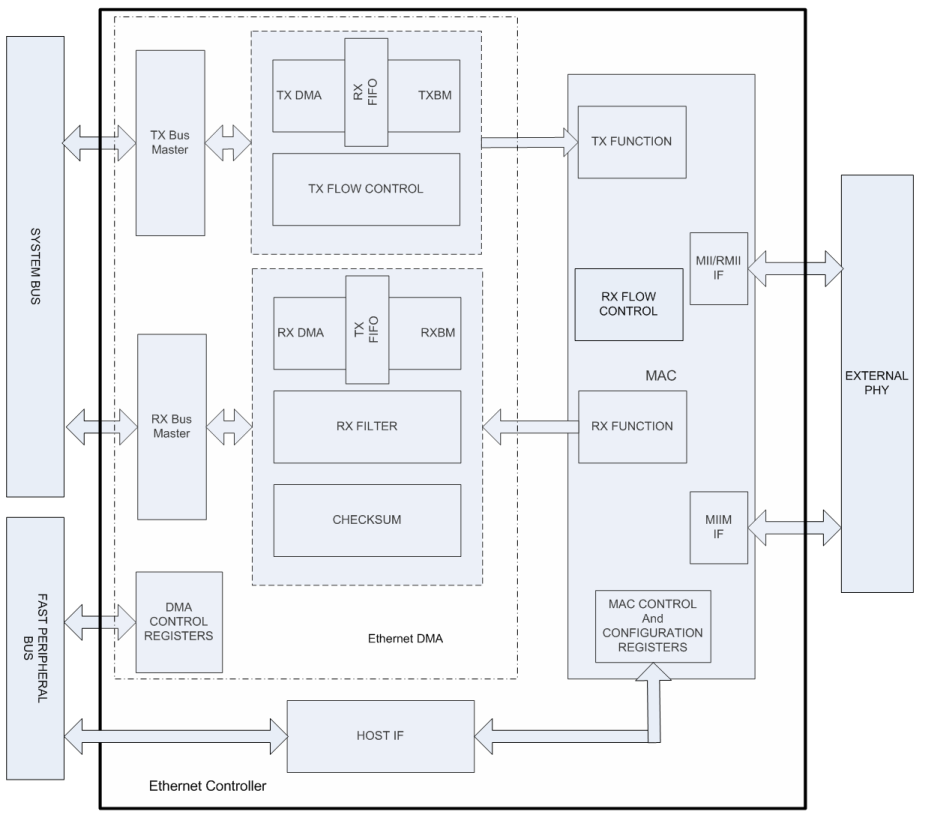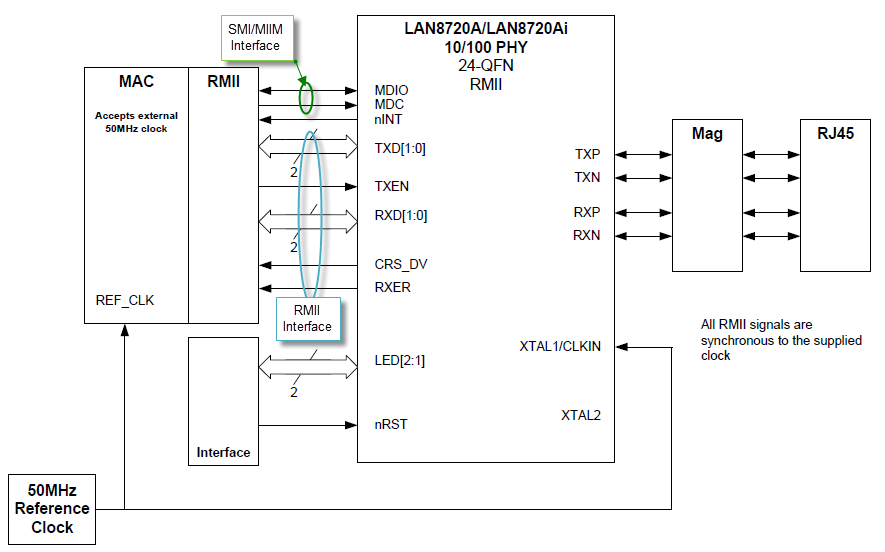1.2.5.7.1 Abstraction Model
The Ethernet Controller provides the modules needed to implement a 10/100 Mbps Ethernet node using an external Ethernet PHY chip. The PHY chip provides a digital-analog interface as part of the Physical Layer and the controller provides the Media Access Controller (MAC)_layer above the PHY.
As shown in figure below, the Ethernet Controller consists of the following modules:
- Media Access Control (MAC) block: Responsible for implementing the MAC functions of the Ethernet IEEE 802.3 Specification
- Flow Control (FC) block: Responsible for control of the transmission of PAUSE frames. (Reception of PAUSE frames is handled within the MAC.)
- RX Filter (RXF) block: This module performs filtering on every receive packet to determine whether each packet should be accepted or rejected
- TX DMA/TX Buffer Management Engine: The TX DMA and TX Buffer Management engines perform data transfers from the memory (using descriptor tables) to the MAC Transmit Interface
- RX DMA/RX Buffer Management Engine: The RX DMA and RX Buffer Management engines transfer receive packets from the MAC to the memory (using descriptor tables)

For completeness, we also need to look at the interface diagram of a representative Ethernet PHY. As shown in figure below, the PHY has two interfaces, one for configuring and managing the PHY (SMI/MIIM) and another for transmit and receive data (RMII or MII). The SMI/MIIM interface is the responsibility of the Ethernet PHY Driver Library. When setting up the Ethernet PHY, this Ethernet driver calls primitives from the Ethernet PHY Driver library. The RMII/MII data interface is the responsibility of the Ethernet MAC Driver Library (this library).

